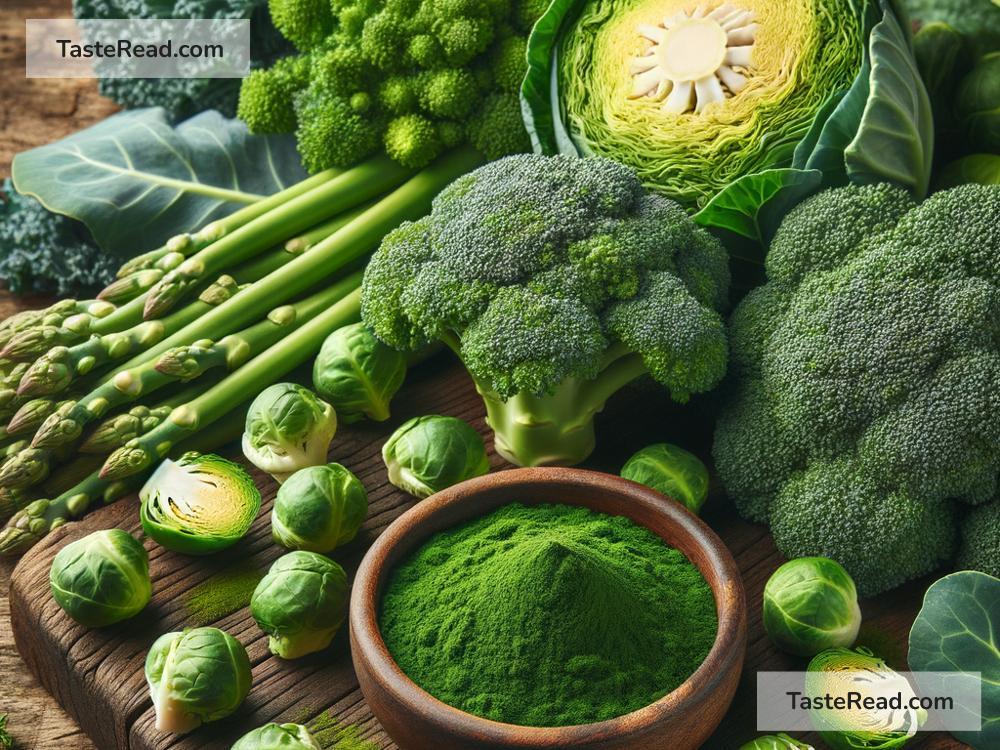Understanding the Role of Sulforaphane in Health
Sulforaphane might sound like a complicated science term, but don’t let its name intimidate you! It’s a naturally occurring compound found in certain vegetables, and it’s getting a lot of attention because of its amazing health benefits. In this blog, we’ll break it down in simple terms so you can understand why sulforaphane is such an exciting topic in health and wellness.
What is Sulforaphane?
Sulforaphane is a plant-based compound belonging to a group called isothiocyanates, which are known for their health-promoting properties. It forms when raw vegetables containing glucoraphanin, a precursor compound, are chopped, chewed, or crushed. This triggers an enzyme called myrosinase, which converts glucoraphanin into sulforaphane. Essentially, sulforaphane is created when certain vegetables are prepared or eaten raw.
Which Foods Contain Sulforaphane?
The best source of sulforaphane is cruciferous vegetables, a family of veggies known for their robust health benefits. Here are a few sulforaphane-rich options:
- Broccoli (especially sprouts)
- Cauliflower
- Brussels sprouts
- Kale
- Cabbage
- Mustard greens
Broccoli sprouts are particularly noteworthy—they contain up to 100 times more glucoraphanin than mature broccoli! So, if you’re looking to maximize your sulforaphane intake, broccoli sprouts are an excellent choice.
Why is Sulforaphane Important for Health?
Sulforaphane is best known for its powerful ability to support the body’s natural defenses. Researchers have been studying it for years, and the results are exciting. Let’s take a look at what sulforaphane can do for our health.
1. Boosts Antioxidant Activity
One of the key roles of sulforaphane is its ability to boost the body’s production of antioxidants. Antioxidants are molecules that fight harmful substances called free radicals, which can damage cells and lead to aging, inflammation, and diseases like cancer. Sulforaphane activates a pathway called Nrf2, which tells your body to produce its own antioxidants. These natural antioxidants help protect your cells and keep your body functioning at its best.
2. Supports Detoxification
Our bodies are constantly exposed to environmental toxins—from pollution to pesticides, and even chemicals in processed foods. Sulforaphane helps activate certain enzymes in the liver that assist with detoxification. These enzymes work to remove harmful substances from the body, supporting overall health and reducing the risk of long-term damage from toxins.
3. Fights Inflammation
Inflammation is the body’s natural response to injury or infection, but chronic inflammation can contribute to diseases like diabetes, arthritis, and heart problems. Sulforaphane has anti-inflammatory properties, helping to reduce inflammation and protect the body from its harmful effects.
4. Protects Against Cancer
Perhaps one of the most exciting areas of research is sulforaphane’s potential role in fighting cancer. Studies have shown that sulforaphane can slow the growth of cancer cells and even kill them in some cases. It also helps prevent cancer by reducing inflammation and protecting DNA from damage. While more research is needed, these findings suggest that sulforaphane could play a role in cancer prevention and treatment.
5. Improves Brain Health
Sulforaphane may also support brain health. Research suggests that it can help protect brain cells from damage caused by oxidative stress and inflammation. Some early studies have explored its potential to improve cognitive function and reduce symptoms of diseases like Alzheimer’s and Parkinson’s.
6. Supports Gut Health
A healthy gut is essential for overall health, and sulforaphane has been found to support the growth of good bacteria in the gut. It may also help protect the lining of the gut from damage caused by inflammation or toxins.
How to Get More Sulforaphane in Your Diet
Now that you know how sulforaphane benefits your health, you might be wondering how to include more of it in your diet. Here are a few tips:
- Eat Cruciferous Vegetables Raw or Lightly Cooked: Heat can destroy the enzyme myrosinase, which is needed to produce sulforaphane. If you prefer cooked vegetables, lightly steaming them is the best option to preserve sulforaphane levels.
- Add Broccoli Sprouts to Your Meals: Broccoli sprouts pack a powerful punch of sulforaphane, and they’re easy to sprinkle on salads, sandwiches, or soups.
- Pair Veggies with Mustard: Mustard seeds contain myrosinase, so adding mustard to your cooked vegetables may help restore sulforaphane production.
- Make Smoothies: Blend kale, broccoli sprouts, or other cruciferous veggies into your smoothies for a sulforaphane boost.
Final Thoughts
Sulforaphane is a fascinating compound that highlights the power of food in promoting health. Found in simple vegetables like broccoli and kale, it offers benefits ranging from reducing inflammation to supporting detoxification and even fighting cancer. Including cruciferous vegetables in your diet—especially raw or lightly cooked—can help you harness the health-promoting potential of sulforaphane.
Remember, small dietary changes can have a big impact over time. By incorporating sulforaphane-rich vegetables into your meals, you’re giving your body a natural way to protect and regenerate itself. So, the next time you enjoy a plate of broccoli, know that you’re doing something great for your health!


